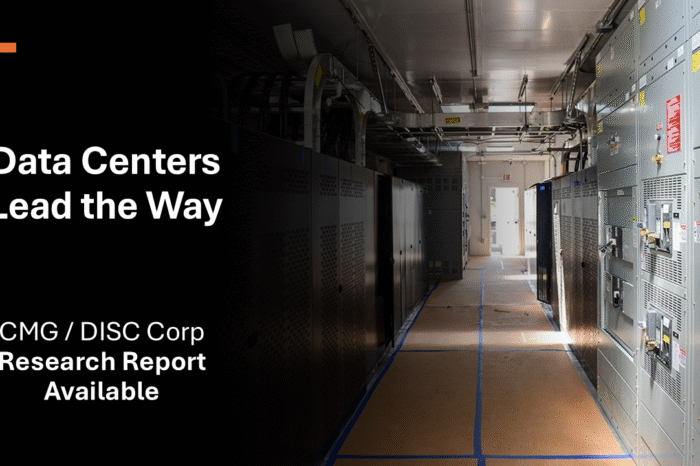Distributor 2nd Quarter Earnings Insights – Graybar, Rexel, Wesco
 Last week was Q2 earnings week for distributors and many manufacturers. Rather than report on them individually, let’s look at them as a group to identify trends. First up are the three electrical distributors that publicly share results – Graybar, Rexel, and Wesco. The following is from their quarterly releases with a focus solely on their US / North American businesses based upon the level of detail in their reports.
Last week was Q2 earnings week for distributors and many manufacturers. Rather than report on them individually, let’s look at them as a group to identify trends. First up are the three electrical distributors that publicly share results – Graybar, Rexel, and Wesco. The following is from their quarterly releases with a focus solely on their US / North American businesses based upon the level of detail in their reports.
And so, there is no discrimination, I’ve put them in alphabetical order.
Graybar
At a high level, Graybar’s press release shared:
- Quarterly net sales were $3.005 billion, an increase of 7.6% vs 2023 Q2
- Net income was up 11.1% for the quarter to $110.4 million (3.68% but remember, they have dividends / retirement payments).
- For the first half of 2024 they are up 5%, hence they saw growth from Q1 to Q2.
- Graybar reported a decrease in net income of 13.4% due to planned investments in “Graybar Connect” which is it’s “multi-year, strategic business transformation project.” (Given the word “connect” this inevitably is a digitalization initiative tied to supply chain optimization and/or customer electronic connectivity.)
A deeper dive into its 10-Q, shares the following additional information:
- The company pays a cash dividend per share of common stock of 30 cents / share. There are 32.4 million common shares outstanding. This dividend payout is $120.12 million for a total “adjusted” net income of $230.52 million or 7.68%.
- Of the 32.4 million shares, 27.373 million are issued to voting trustees so the entire $120.12 million may not be paid out.
- The cash dividend payout in Q2 was $9.7 million.
- Regardless of which dividend statistic used, Graybar’s net profit, when compared to other distributors or the NAED PAR, is not lackluster, which is what the number looks like at first glance.
- 60% of the business is construction (up from 57.5% in 2023), 22.7% is CIG (down from 24.6%) and 17.3% is Industrial / Utility (down from 17.9%). (A slight change in customer mix but this is weighted based upon dollars and could be an indication that Graybar is winning bigger orders with contractors, especially data center business or potentially other infrastructure projects.)
- Construction sales in Q3 increased 12.3%
- Industrial / utility sales increased 4.5%
- CIG sales decreased 1%
- The company has very little debt. The company has $140.9 million in cash / cash equivalents on hand at the end of Q2 (which probably means only small acquisitions for now until this increases, unless they want to tap into their lines of credit or borrow funds.)
- Acquisitions that Graybar has made to date were funded with “cash on hand.”
- Gross margin increased $24.9 million or 4.4% even though GM% decreased to 19.5%. (which given no / little price increases says that they had a product mix change, are working SPAs, are strategically working to optimize customer pricing, and/or are winning more big projects and focused on GP$ and not necessarily GP% as typically larger orders are drop ship and lower GM%. A key metric distributors should consider if GM$ / invoice generated. This is also a viable metric for managing salespeople.)
- SG&A went up $40.8 million due to compensation and IT / consulting expenses related to Graybar Connect.
Overall appears to be a very good quarter for Graybar. Seemingly they are winning with large contractors and winning larger pieces of business. Based upon marketplace feedback, they may be winning a good percentage of the data center business. Further, they are investing in technology to improve productivity and customer interaction.
Rexel
From Rexel’s earnings transcript and its press release, with a focus on their US / North American comments:
- Worldwide
- Business for the quarter, based upon same-day basis, was down 2.4%, an improvement from being down 4.6% with sequentially better monthly performance. Overall, revenue was 9.6 billion euros ($10.518 billion USD)
- On a “reported” basis, Q2 was up 1.8% YoY
- Digital sales, via any electronic method, are now 31% of company sales.
- Business for the quarter, based upon same-day basis, was down 2.4%, an improvement from being down 4.6% with sequentially better monthly performance. Overall, revenue was 9.6 billion euros ($10.518 billion USD)
- US / North America
- North America represents 43% of Rexel’s sales.
- Overall, North America was
- Down .9% in Q2 and down 1% for the first half on a “constant and same day basis.
- It was up 1.2% for the quarter on a reported basis.
- Pricing was down .4%
- The company benefited from a .7% appreciation of the USD against the euro.
- Some positive effect due to Talley.
- Overall, after all the plus / minuses, let’s call it flat.
- The US represents 82% of Rexel North America’s business which, overall, was down 1%.
- Residential is 7% of the company’s US business
- Backlog up 1% vs Q1 due to data centers and wastewater projects.
- US EBITDA was down .79 bps to 6.8% of sales.
- North American gross margin was 24.1% (While 4.3 points better than Graybar, on 2/3rds the quarterly volume, the difference is probably customer and order mix. More small customers. More small orders.)
- The Talley acquisition has been completed.
- ESI, in Miami, had revenues of about $60 million.
- US performance driven by “backlog execution of diversified projects.”
- Digital now represents 22% of North American sales
- US FTE headcount dropped by 266 people, or 3.4%, while the company added 4 branches.
Overall, Rexel is still challenged but this time what they touted as a strength, the density model and broad customer base (smaller customers) ends up backfiring on them as they are probably less involved in the large contractor business than Graybar’s performance portrays. Not bad, just different, as smaller customers have different needs and business dynamics. Turning Rexel is akin to turning the Titanic … it takes time.
Wesco
In reading through Wesco’s second quarter earnings transcript and presentation with a focus on their EES group …
- According to John Engle “second quarter results were somewhat below expectations for a low single-digit decline in reported sales … Results improved as moved through the quarter with a return of organic sales growth in June.”
- Company closed on two software acquisitions – entroCIM which focuses on the data center and building intelligence sectors and Storeroom Logix, which is asset and inventory management (which has been led by our friend Sean Leahy, formerly of IDEAL Industries, Vantage Group, and Vanguard National Alliance.)
- Commented on growth in data center business (which begs the question of how Wesco determines which division to record data center business – EES or CSS, or is it in both based upon the customer or the salesperson? This could impact the performance of each of the divisions as well as difficult for manufacturers to evaluate performance.)
- Utility business slowed.
- Strong quotation activity and expects growth in second half.
- Overall organic business declined 1%, albeit driven be a decline in the utility business. (Organic is mentioned as the company sold its integrated supply business which skews YoY stats.)
- EES
- Q2 down about 1% to $2.173 billion. (So, Wesco’s EES business is 2/3rds Graybar. Wesco’s CSS business is $1.866 billion for a total of $4.039 billion. While Graybar does have some utility business, for the quarter it is about $540 million. This results in Graybar at $2.5 billion vs Wesco at ??? (for a comparable EES and CSS … probably $3.25-3.5 billion) … and Wesco is also worldwide revenues. Could we say that, in the US, they are comparable?)
- EES up low single digits in Canada due to large project wins
- Seeing growth in EES internationally
- Construction sales down low single digits “due to weakness in solar”
- Industrial up low single digits
- Backlog down 2% sequentially and 9% YoY
- Company has undertaken “cost actions” in late 2023 and so far in 2024.
- For the rest of the year, Wesco is projecting sales growth to be flat to up low-single digits with construction markets pressured but they expect an increase in large project activity (this may be data centers and industrial construction and is probably based upon customer input.)
- Seeing “softness” in day to day business.
- Q2 down about 1% to $2.173 billion. (So, Wesco’s EES business is 2/3rds Graybar. Wesco’s CSS business is $1.866 billion for a total of $4.039 billion. While Graybar does have some utility business, for the quarter it is about $540 million. This results in Graybar at $2.5 billion vs Wesco at ??? (for a comparable EES and CSS … probably $3.25-3.5 billion) … and Wesco is also worldwide revenues. Could we say that, in the US, they are comparable?)
- CSS
- Data center sales were up high teens in Q2. (The question becomes the product mix. Is any of this electrical and therefore obfuscates the EES sales data, strictly from a reporting and industry comparison viewpoint? Selected manufacturers may be interested in asking Wesco about this.)
- Security sales down mid-single digits
- Enterprise network infrastructure down low-single digits
Insights from Analyst Questions
- Inflation is impacting the UBS business as budget approvals are not keeping up with utilities’ desired project needs.
- Analysts commented that the July ISM was 46.8%, representing a challenging industrial market and inquired how Wesco felt this would impact their business. Some of this is reflected in a slowdown in Wesco’s industrial MRO business. The term “trending sideways” was used by Wesco.
- Wesco commented about having a strong pipeline in this area with strong bidding / quotation activity.
- Wesco expanded operating margins in its EES business.
Overall Observations
- Overall, the market, according to all three, improved in Q2 and improved monthly.
- Graybar outperformed Rexel and Wesco with their benefit being the contractor market and seemingly being more successful on large projects, perhaps the data center business that is driving the market.
- Wesco’s data center business may be comparable to Graybar, however, it is difficult to evaluate for the EES business, and hence electrical product mix only, given data center business is captured within the CSS division.
- In reviewing their transcripts and financial results, it seems like the companies are becoming more dissimilar than similar … and none is wrong, they are just “different.”
- Rexel has more small and medium size business.
- Wesco’s utility business is significant and impacts performance as well as worldwide has more of an impact. The differences between EES and CSS may get blurred due to data centers (unless Wesco can provide some clarity.)
- Graybar is focused solely on the US and larger accounts
- Reading between the lines, however, it appears that much of the “publicly reporting national chain” data center business centers around Graybar and Wesco.
- Margins remain steady, perhaps a slight improvement.
- All three companies are utilizing their financial strength to invest in digitalization.
- Looking forward, the three companies are projecting a relatively flat / low single digit business. Given their focus on “large projects / large customers”, it begs the question of “are there opportunities that are being overlooked because these companies are not optimized for them or are other segments challenged? After all, no business can be optimized to capitalize on all segments.
How was your Q2? What are you seeing for the remainder of the year? How are you seeing these 3 companies in the market?





















